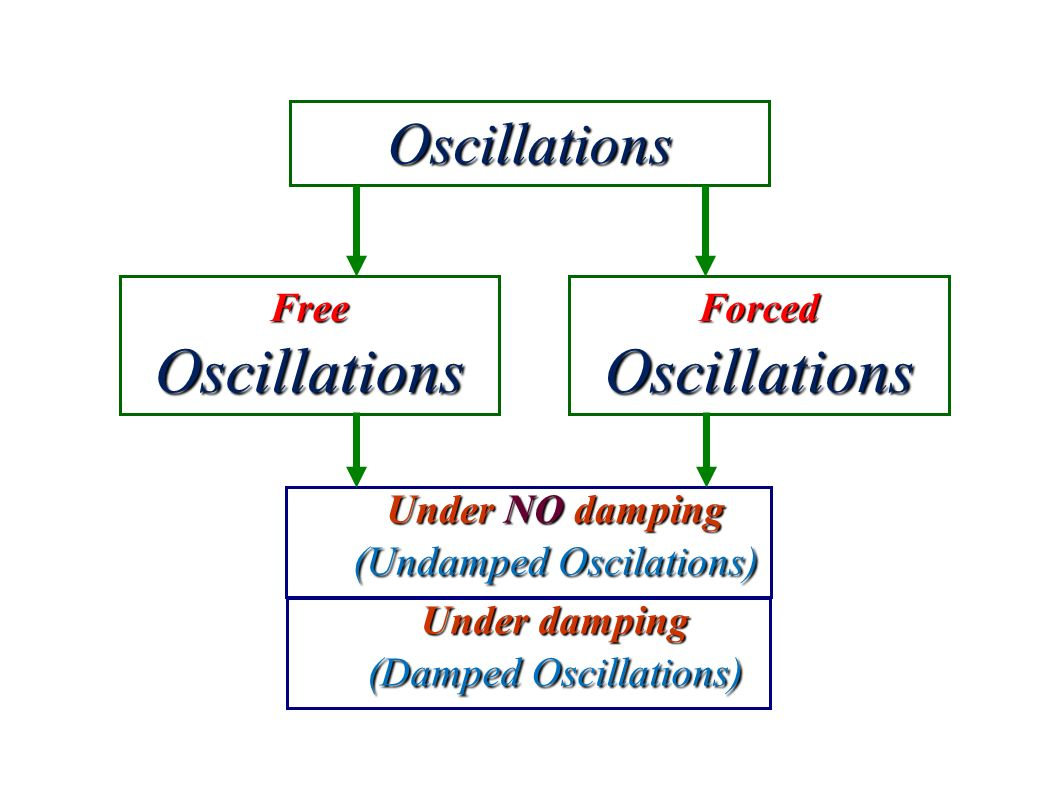Free Oscillation
Free oscillation is a kind of oscillation in which the body oscillates with natural frequency without the help of any periodic force or external force. No energy being add or taken away for this system. In a free oscillation, the sum of potential energy (PE) and kinetic energy (KE) cannot increase the potential energy (PE). In the free oscillation, it will be large at the extreme point of the oscillation where the kinetic energy will be zero. The examples of free oscillations are as follows.
1. Liquid sloshing mode “restoring force according to gravity”.
2. When vibrate the metal plate” Elastic restoring force”.

Forced oscillation
When the object oscillates being influenced by some external periodic force it is called forced oscillation. When nonconservative forced are present exciting system and oscillation can die out unless energy continuously supplied to the system. The examples of forced oscillations are as follows.
1. Shivering to heat the body will be cold.
2.Expansion of chest in breathing.
Damped oscillation
In damped oscillation, the non-conservative forces will be present for an exciting system. Friction is the most common type of non-conservative force but no longer as an ideal system. The mechanical energy in the system diminishes in time and motion is also known as damped the motion of this system. It can decay the oscillation if the damping is “weak. If the damped will be “strong” motion may be dying without the oscillation. Oscillation in the real system may die away from their amplitude due to continuous decrease over time and oscillation will be damped. In the weak damped, the amplitude of pendulum will decrease over time due to the air resistance in this type damped will be “weak”.
Resonance

The phenomenon of driving the system with the frequency that is equal to its natural frequency is known as the resonance. The system that is being driven in the natural frequency is known as the resonate. When the driving frequency becomes progressively higher than the natural frequency or the resonant then the amplitude of the associated oscillations tends to be smaller. Until the oscillations completely disappear. The most efficient way of transferring the energy from the driver to the system is by matching the frequency of the driving force with the natural frequency associated with the system. This is termed as resonance and the relatively small driving forces at the resonance can be build-up to the large amplitude oscillations.